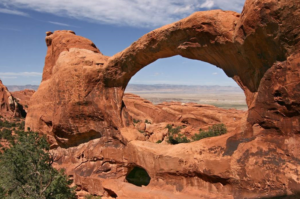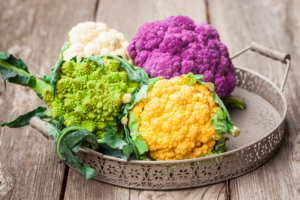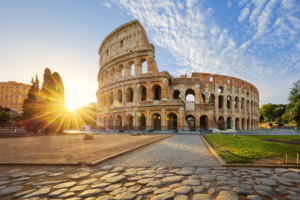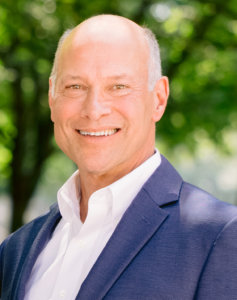Why Beauty is Important
October 22, 2021
To Inspire:

I (Matt) came across this March 2019 blog post from a freelance journalist, Eric Carlson and thought you would enjoy it. Entitled Why Beauty is Important for our Lives and our Cities, Eric touches on a theme we’ve often reflected on – the importance of beauty in living a great life – a life of purpose, fulfillment and love. Enjoy these excerpts below and make sure these beautiful fall months include some time outside and inside – enjoying the beauty all around us!
Why Beauty is Important for Our Lives and our Cities
“Beauty is Truth, Truth beauty; that is all ye know on earth and all ye need to know” -John Keats
According to legend, Xerxes, the king of Persia, once stopped his army for several days to admire the beauty of a sycamore tree. For a warrior king leading an army of hardened men, this was a bewildering act.
The sycamore tree was, I’m sure, incredibly beautiful. But aren’t delicate feelings of beauty far removed the harsh realities of battle and the thirst for domination and conquest? Perhaps not. Even on the doorstep of war, the sense of beauty seems to be an omnipresent (and necessary) part of our lives.
The Human Connection to Beauty

Beauty isn’t just superficial, and is actually a key part of how we understand and interact with the world around us.
Beauty infuses our inner life and helps us form relationships with our environment, from food to landscape to art, and even with each other. As we travel around a city, for example, we may not be consciously thinking about the beauty of an area or a particular design, but our minds are taking in the buildings, the layout, the roads, and the skyscrapers all around us. The same goes for the natural world.
We consciously store ideas of beauty in our brains and form a relationship with it, no matter whether we are in New York City or Arches National Park.
Perceptions of beauty also shape the way we see food. We generally perceive nutritious, healthy food as naturally beautiful to us, from crisp colorful apples to the amazing fractal variations of spirals in broccoli, all of which are in a striking chartreuse green color. Once we begin to explore the exquisite detail, we can become captivated, attached, and much more likely to eat and propagate this beautiful vegetable.

Things like symmetry and the golden ratio mysteriously inform our sense of beauty in everything else we encounter in the world, from clouds and waves to famous monuments. When it comes to beauty, golden ratios and symmetry are timeless, appearing in both nature and in man-made artifacts and buildings.
But beauty goes much deeper than that. People’s well-being and sense of home is often deeply attached to landscapes and environments. Perhaps we find environments beautiful that will support us the best, or that cultivate an ancestral need for meaning deep in our brains.
So what helps us differentiate helpful beauty from destructive beauty?
Beauty and Vanity
We can all probably pinpoint toxic ideas of beauty in our culture, in ourselves and in others, such as a vain attachment to beauty that leaves us feeling hollow. It’s true that there are many different ways of expressing beauty, especially for such a complicated creature as a human being, but when and where do we go too far?
Excessive plastic surgery, fitness obsession, and desperate reaches for other’s approval of our beauty: these are just some examples of things we cling to in order to become (or remain) what we deem to be beautiful. We use beauty as a weapon to destroy other’s self-worth or get what we want, and in the process lose touch with beauty’s natural gift.
We talk about being “beautiful inside” as something to strive for, but what does that mean? What we want, I think, is the beauty of our external and internal worlds to be in harmony with one another. One of the greatest architects of our time, Frank Lloyd Wright, wanted form and function in his designs not only to work together, but to be united and in harmony. Following this example, we could, like the best of architects, seek to establish harmony between our external and internal worlds of beauty, letting form and function become one.
The Form and Function Of Beauty
If you look at the city of today, especially in America, you’ll probably notice there are quite a lot of things not that beautiful about it. If humans value beauty so much, how did we leave so many of our cities and wilderness areas in such ugly shape?

Any beauty that is separated from its function is inherently out of place, superfluous, in the end becoming merely ornament. As a society, have we concentrated on superfluous beauty while ignoring the real, true beauty that ins connected to a life lived, to a function and purpose?
On the flip side, we have created buildings and cities where form is ignored in favor of function and economic considerations, leaving us with ugly shopping centers and sprawling parking lots that negatively affect our lives.
Why do people visit cities in Europe like Prague and Paris in droves? Why can’t they resist the painted dome of the Sistine Chapel or a beautiful landscape?
Beauty is the answer. We move naturally towards beautiful things, and find pleasure and solace and happiness in our experience of them. Beauty needs to be offered and shared by everyone, including the places we share as a community.
I’m grateful to Eric for his reflections on beauty. More importantly, let’s all of us commit to giving beauty a higher priority in our lives. Whether art, music, nature or home décor, beauty inspires our souls and gives joy to our hearts. And isn’t that much of what a great life is all about.
Greatness… it’s in each of us.
 Written by Matt Palmer, Partner and Co-founder.
Written by Matt Palmer, Partner and Co-founder.
Source: Carlson, Eric, Why Beauty is Important for Our Lives and Our Cities, medium.com